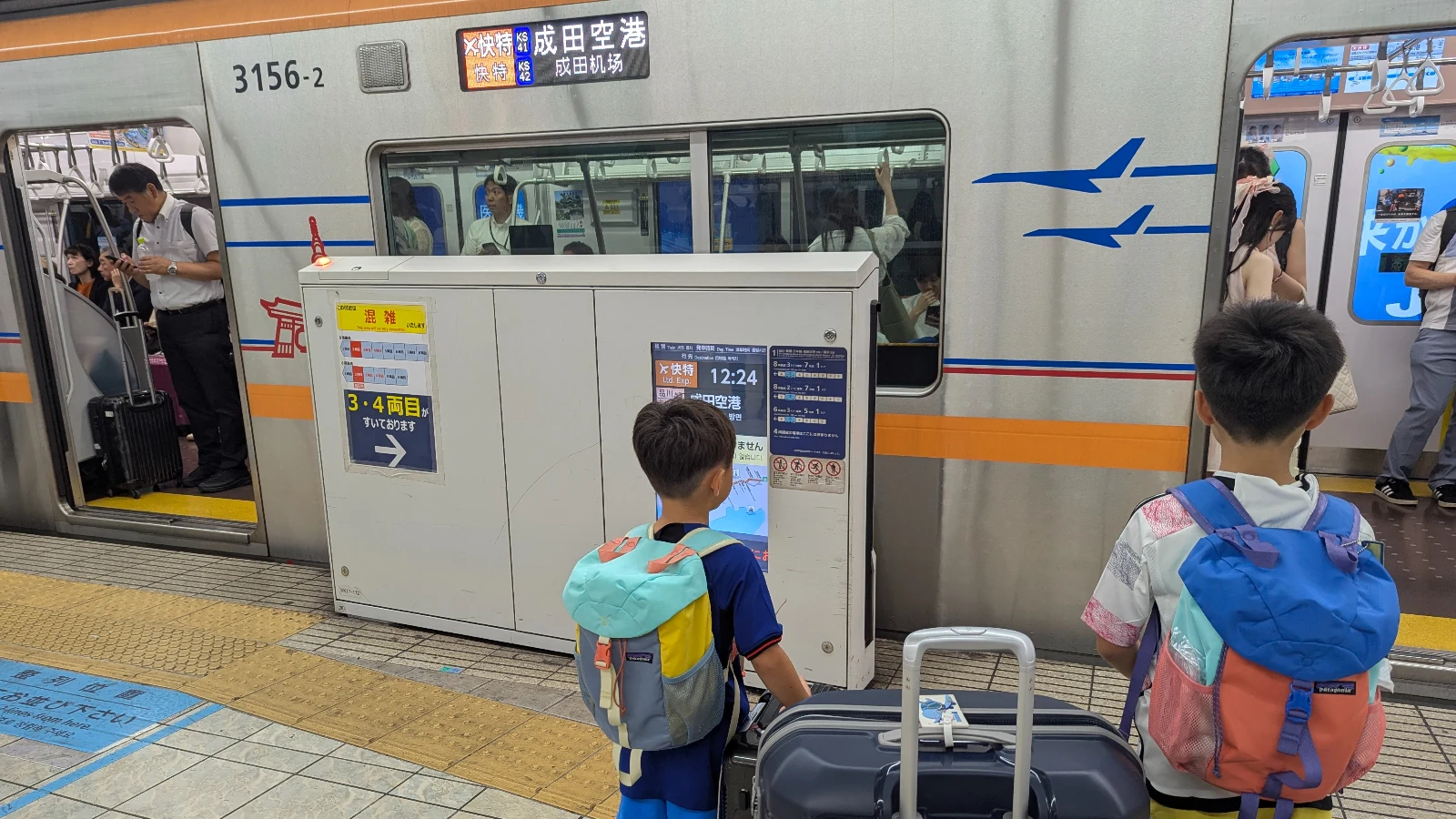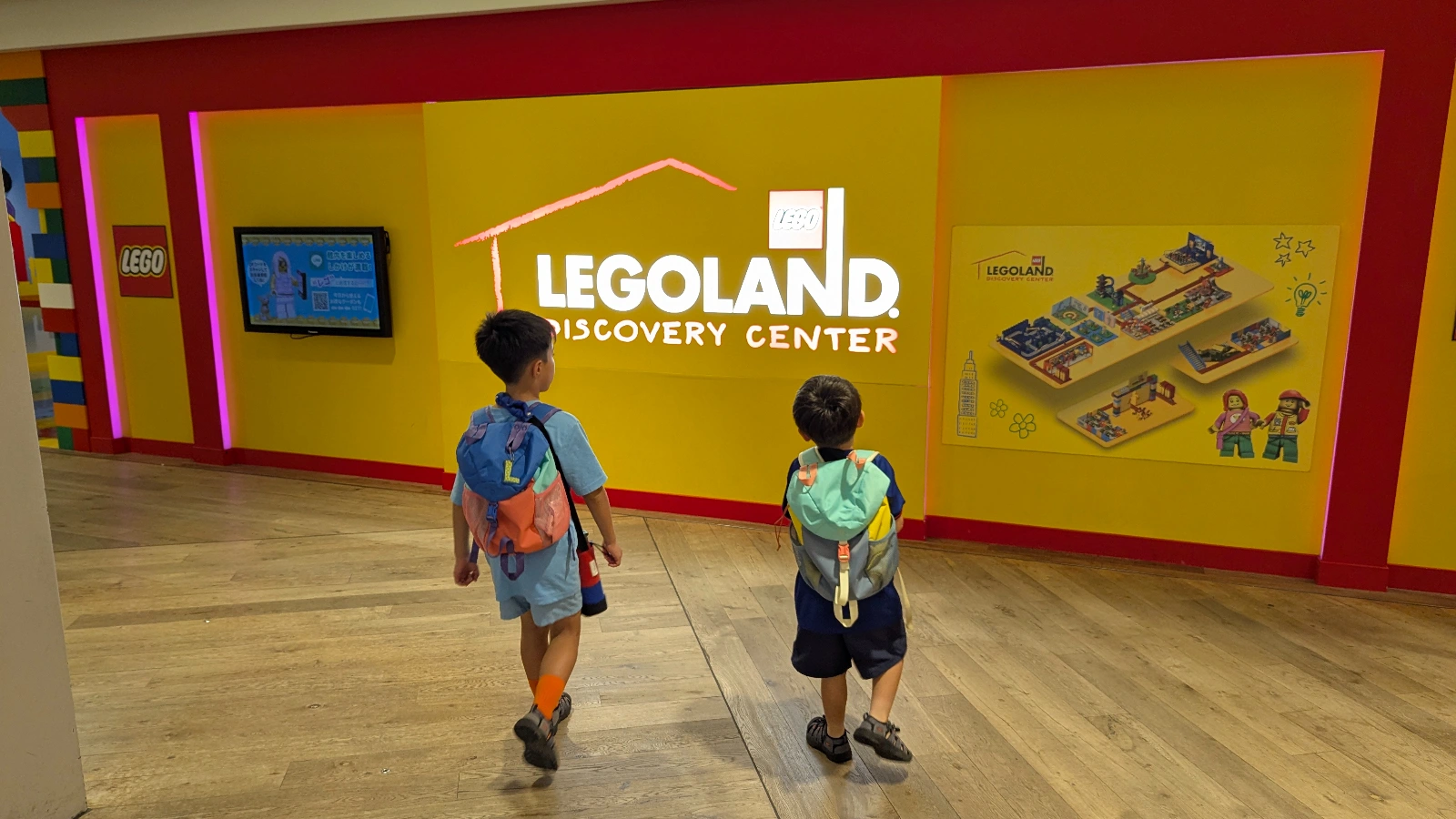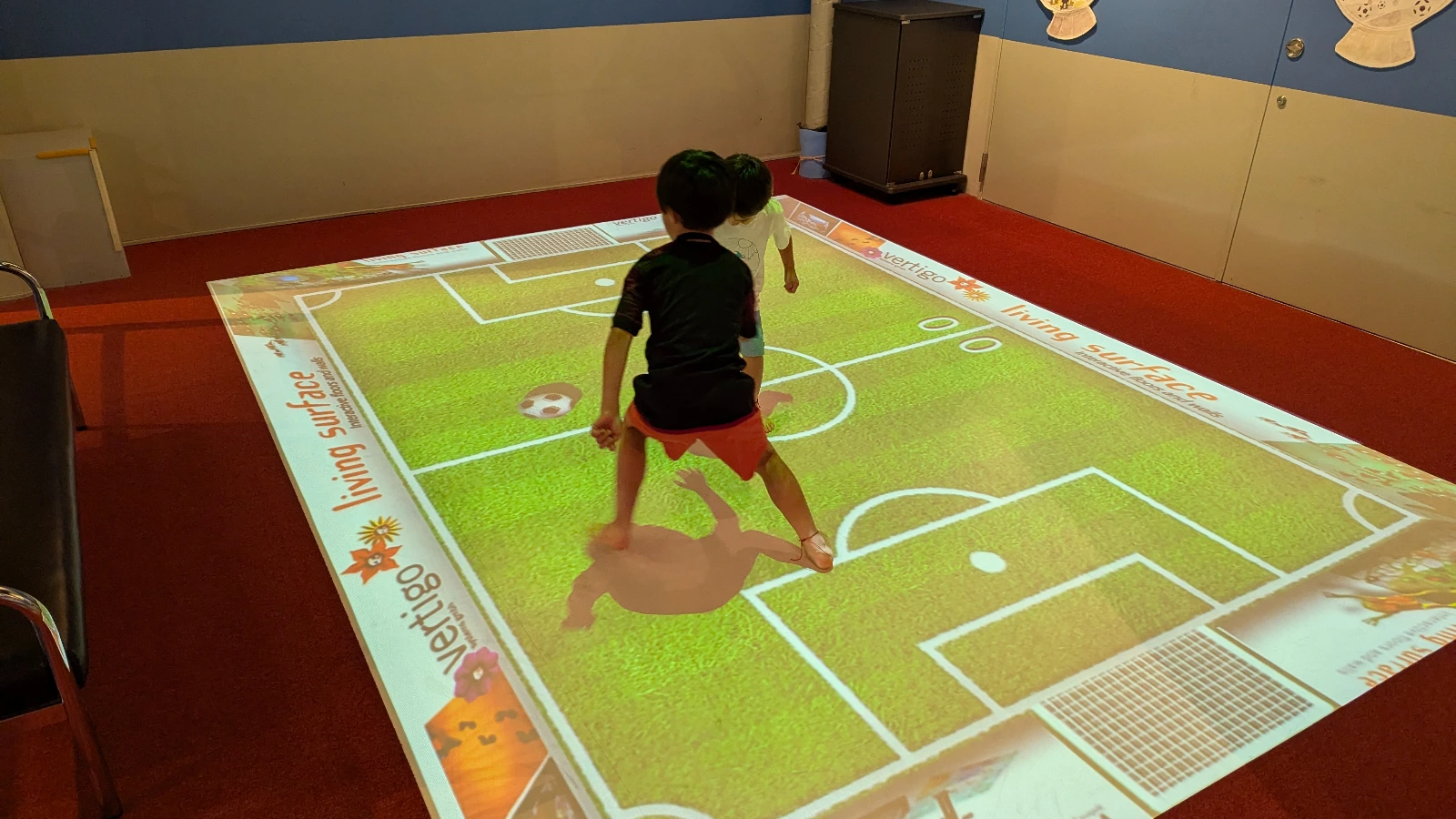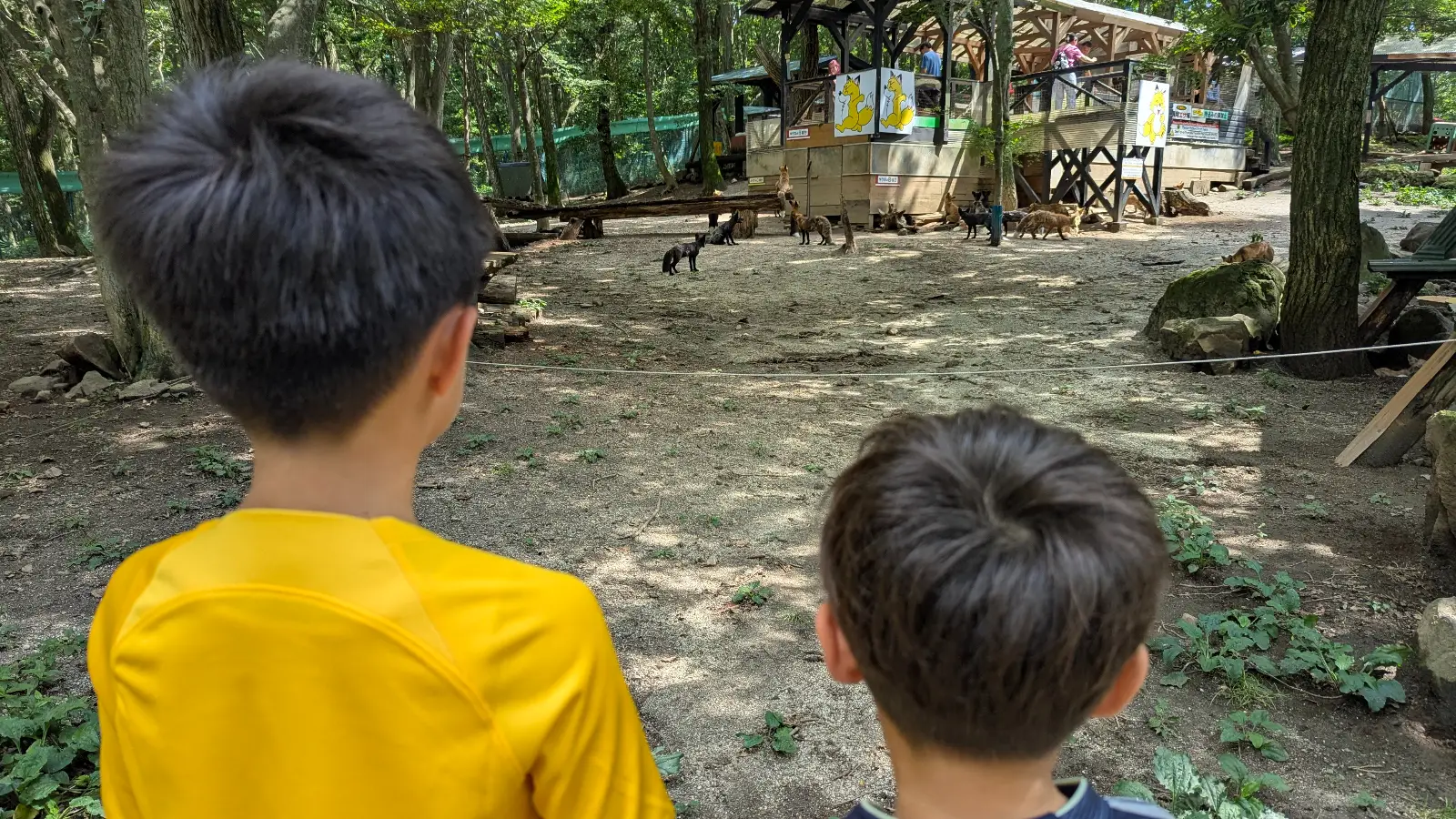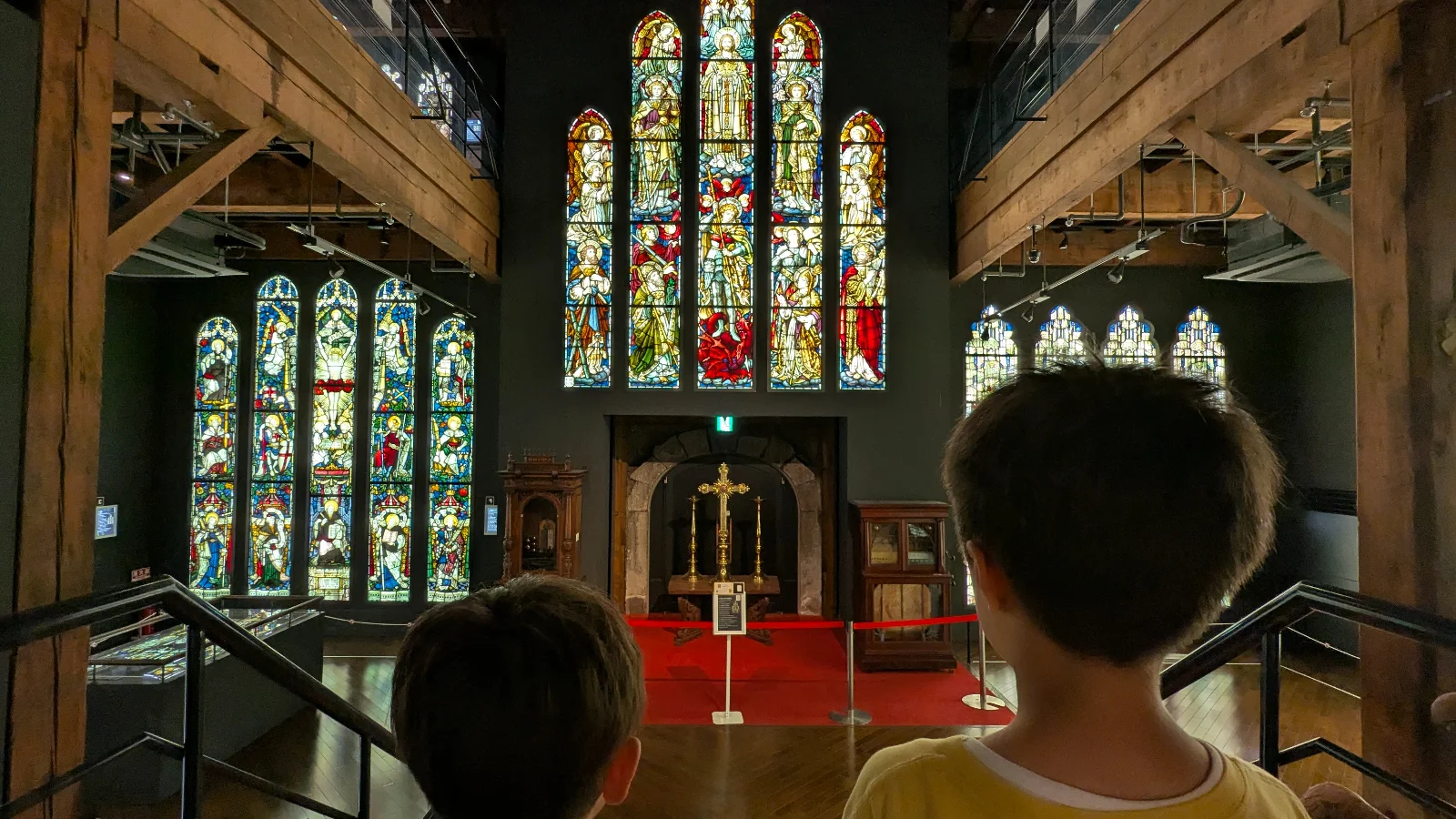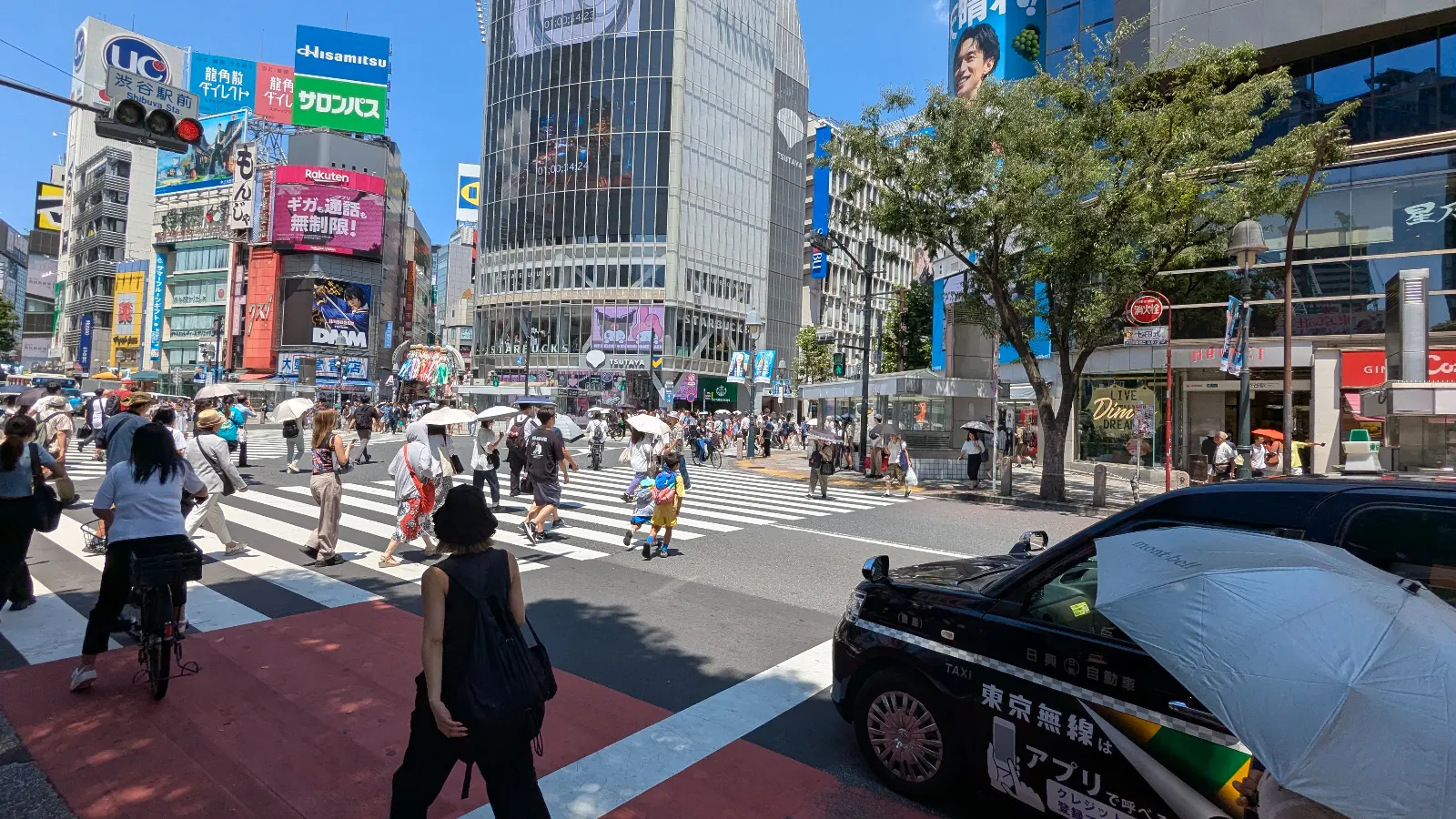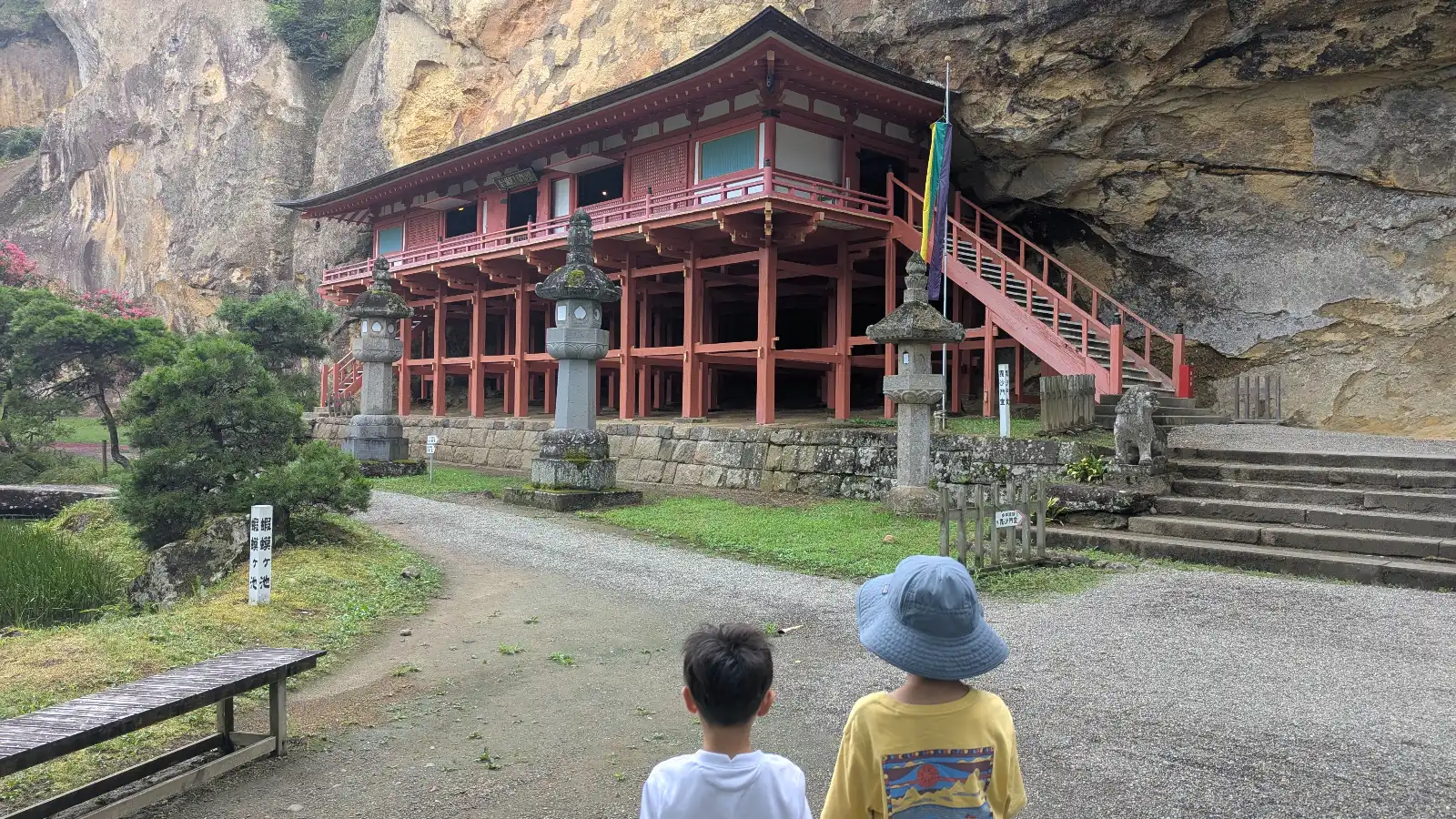
Carved dramatically into a cliffside near Hiraizumi, Takkoku-no-iwaya Bishamondo (達谷窟毘沙門堂) is one of Japan’s most striking temples, where wood and stone seem to merge into a single work of art. The hall known as Iwaya Bishamon Hall, part of Takkoku Seiko-ji Temple, invites families to explore a sacred site that feels both hidden and alive, a place where kids can step into real legends carved straight from the rock. Inside the cliff face rests the Ganmen Daibutsu, a massive Buddha carved directly into the stone, quietly watching over the valley and leaving families in awe of how nature and craftsmanship come together in one breathtaking scene.
Planning a trip to Sendai? Be sure to check out our Sendai with Kids guide for hands-on cultural spots, castle adventures, scenic nature escapes, easy family day trips, and kid-friendly hotel ideas. For families going to Tokyo, our Tokyo Family Travel Guide covers where to stay, how to get around, and what to eat with kids. You can then visit the Tokyo with Kids Hub to find all our guides, adventure stories, and age-specific tips conveniently in one easy place. Want more ideas? See our full Ultimate Guide to Family Attractions in Japan with Kids for the best castles, shrines, theme parks, and more. And if you’re looking to extend your trip, check out our Nikko with Kids guide, it’s only a short train ride away.
Disclaimer: This post contains affiliate links. If you click to purchase, it’s at no extra cost to you… when you book through our links, you help support LuNi Travels and the family guides we create!
Why Book Ahead? It’s quicker, avoids long lines, helps skip language barriers, prevents sold-out attractions, and solves payment issues at places that don’t accept credit cards. *Prices are subject to change.
Why Takkoku-no-iwaya Temple is Great for Families with Kids
- The temple’s dramatic cliffside setting makes kids feel like they’ve stepped into a hidden world, blending exploration with wonder as they follow paths carved into the rock.
- Families can experience an awe-inspiring mix of nature and history, discovering how the wooden structure and natural stone walls have coexisted for more than a thousand years.
- Children are always amazed by the Ganmen Daibutsu, the massive Buddha face carved directly into the cliff, a sight that’s both mysterious and unforgettable.
- Thanks to its short, easy-to-explore grounds, families can enjoy the temple at a relaxed pace without worrying about long climbs or crowds.
- The temple’s peaceful countryside surroundings provide a calm escape where kids can listen to birds, feel the cool mountain air, and unwind after busier sightseeing days.
Parent Insight: Temples like Takkoku-no-iwaya give kids a rare chance to experience Japan’s spirituality as something living, not distant. Encourage children to notice how the temple’s natural rock wall feels different from its wooden beams, these small sensory discoveries help them connect history, craftsmanship, and the natural world through curiosity rather than explanation.
Best Things to Do at Takkoku-no-iwaya Temple with Kids
- Cliffside Temple Walk: Follow the narrow wooden hall built right against the rock wall and let kids imagine how this temple was carved into the cliff more than a thousand years ago. Every creak of the wood and glimpse of stone adds to the sense of adventure.
- Ganmen Daibutsu Carving: Stand before the enormous Buddha face sculpted directly into the mountain, known as the Ganmen Daibutsu. Kids love spotting the smaller carvings nearby and comparing them to the towering figure watching over the valley.
- Iwaya Bishamon Hall: Step inside the sacred hall dedicated to Bishamonten, the god of protection and victory. It’s a great place for children to connect stories of bravery with the artistry of ancient Japan.
- Peaceful Temple Grounds: Wander through shaded paths surrounded by moss, trees, and quiet air. The compact size and gentle slopes make it perfect for young kids to explore safely while parents enjoy the calm.
- Red Bridge and River Wish: Just beyond the temple’s entrance, a striking red bridge crosses a clear pond, a perfect photo spot and a fun place for kids to pause, make a wish, or watch their reflection in the water below. The vivid color against the stone cliffs and forest creates a magical ending to the visit.

Practical Tips for Visiting Takkoku-no-iwaya Temple with Kids
- Cost: ¥ – Adults ¥500; Junior high and high school students ¥200; elementary and younger free.
- Best Age Range: Ages 5+, while all ages can enjoy the scenery, older kids appreciate the history and carvings more deeply.
- Stroller-Friendly?: Not ideal for strollers. There are uneven paths, stairs, and gravel areas; baby carriers are recommended for infants and toddlers.
- Rest Areas: Benches and shaded spots are available near the entrance and parking area, offering quiet breaks for families before or after exploring.
- Food: No food or drinks are sold within the temple grounds.
- Parking: A free parking area is available near the entrance, convenient for families traveling by car.
Best Time to Visit Takkoku-no-iwaya Temple with Kids
The best time to visit Takkoku-no-iwaya with kids is during spring and autumn, when the surrounding trees frame the red bridge and temple cliffs with vivid color. In spring, families can enjoy mild weather, gentle breezes, and fresh greenery climbing up the rock walls. During autumn, the fiery leaves contrast beautifully with the temple’s deep red accents, creating one of the most scenic views in Iwate.
Summer visits are possible but can be warm and humid, while winter brings a quiet, mystical beauty, with light snow dusting the cliffs and statues. The temple remains peaceful year-round, but arriving in the morning ensures a calmer visit before larger groups arrive.
For year-round planning, explore our Japan Seasonal Guides for Families, including detailed resources for spring, summer, autumn, winter, and our full Best Time to Visit Japan with Kids guide.

How Long to Spend at Takkoku-no-iwaya Temple with Kids
Plan to spend about 30 minutes to 1 hour at Takkoku-no-iwaya Bishamondo with kids, which is enough time to explore the main temple hall, admire the Ganmen Daibutsu, and enjoy the peaceful atmosphere around the red bridge and forest path.
Families with toddlers and younger kids often take a shorter visit, focusing on the main viewing areas and bridge. School-age children usually enjoy exploring more slowly, taking photos, and spotting the smaller carvings hidden along the rock face. For families who love nature or photography, extending your visit closer to an hour allows time to pause, reflect, and take in the quiet charm of this cliffside temple.
How to Get to Takkoku-no-iwaya Temple with Kids
- By Train: About 10 minutes by taxi to the temple from Hiraizumi Station.
- By Bus: Buses run several times per day, from Hiraizumi Station, but check local timetables, as service may be limited outside peak hours.
- By Car: Families driving can reach Takkoku-no-iwaya in about 10 minutes from central Hiraizumi or Ichinoseki I.C. on the Tohoku Expressway. Free parking is available near the entrance.
Luca & Nico’s Tip: Challenge your family to see who can take the best photo of the temple, one that shows how the wood, rock, and red bridge all fit together. The trick? Capture the temple and the mountain in the same shot, that’s when the magic really shows.
If your trip includes bullet trains, don’t miss our Shinkansen With Kids guide for tips on seats, luggage, and navigating stations with little travelers. Parents comparing rail options can also see our Japan Rail Pass Guide to understand when the pass is worth it for families. And if you want stress-free station transfers, our Japan Luggage Delivery Guide explains how to send suitcases ahead so your family can travel light and move easily between cities.

Family-Friendly Hotels Near Takkoku-no-iwaya Temple in Hiraizumi
- Luxury
- KAMENOI HOTEL Ichinoseki – Around 25 minutes by car from Takkoku-no-iwaya. A stylish, modern ryokan-style hotel with spacious rooms, an onsen bath, and traditional Japanese meals that families can enjoy together after a day of sightseeing.
- Mid-Range
- Bellino Hotel Ichinoseki – About 20 minutes by car from the temple. Comfortable Western-style rooms, friendly staff, and a convenient location near Ichinoseki Station make this an easy choice for families traveling by train or car.
- Budget
- Naruko Kanko Hotel – Approximately 1 hour by car from Takkoku-no-iwaya. A classic onsen hotel with large family rooms and relaxing baths, perfect for families looking to combine cultural exploration with a hot spring getaway.
Choosing the right base can make all the difference when exploring Japan’s lesser-known towns and rural regions. Our Best Family Hotels in Japan guide highlights kid-friendly stays across every part of the country, from cozy ryokan and hot spring retreats to modern hotels with spacious family rooms and easy transport access. If you’re comparing options in larger cities before or after your visit, you can also explore our dedicated hotel guides for Tokyo, Kyoto, Osaka, Fukuoka, Kobe, and Nagasaki.
Family-Friendly Attractions Near Takkoku-no-iwaya Temple
- Chusonji Temple: This UNESCO World Heritage temple complex is home to the dazzling Konjikido (Golden Hall). Kids enjoy the gentle forest walk leading to the temple and spotting statues along the path.
- Motsuji Temple – Another UNESCO-listed site in Hiraizumi, famous for its peaceful Pure Land garden and reflective pond. Kids enjoy watching koi fish glide through the water while parents take in the stunning symmetry of the ancient layout.
- Hiraizumi Cultural Heritage Center – A compact but fascinating museum that helps children understand the stories behind Chusonji and Motsuji with 3D models, dioramas, and short videos explaining how this area became a World Heritage Site.
- Geibikei Gorge Boat Ride – Families can enjoy a scenic flat-bottomed boat trip along a towering limestone gorge. Boatmen sing traditional songs as you glide down the river, a calm and unforgettable experience for children and adults alike.
- Mizusawa Onsen Area: This onsen village offers family-friendly baths and small local eateries, perfect for unwinding after exploring temples and cliffs.
If you’re mapping out your wider Japan route, start with our Japan 14-Day Family Itinerary for a balanced mix of major cities, culture, and kid-friendly highlights. Families comparing trip lengths often find it helpful to look at multiple options, including classic 7-day and 10-day Japan itineraries that show how to pace Tokyo, Kyoto, and Osaka with kids.
For even more support planning your trip, our Japan Family-Friendly Travel Hub brings together every city guide, attraction, and resource in one place, while our Planning a Family Trip to Japan and Japan Budget Family Travel Tips guides help parents navigate budgets, routes, and practical details.

FAQs: Visiting Takkoku-no-iwaya Temple with Kids
Planning a visit to Takkoku-no-iwaya in Iwate? Here are quick answers to the most common questions families ask before exploring this cliffside temple with kids, from access and tickets to stroller tips and the best time to go. For seasonal updates, visit the official website.
A: Takkoku-no-iwaya Bishamondo is famous for its cliffside temple carved directly into a rock wall and for the Ganmen Daibutsu, a giant Buddha face sculpted into the stone. Families visit to admire how nature and craftsmanship blend seamlessly, creating one of Iwate’s most unique and photogenic temples.
A: Takkoku-no-iwaya Bishamondo is located near Hiraizumi in Iwate Prefecture, about a 10-minute drive from JR Hiraizumi Station. It sits in a quiet forested valley surrounded by mountains, making it an easy day trip from nearby Ichinoseki or other Tohoku destinations.
A: Admission to Takkoku-no-iwaya Bishamondo costs ¥500 for adults and ¥200 for junior high and high school students. Younger children enter for free, making it an affordable stop for families exploring the Hiraizumi area.
A: Takkoku-no-iwaya Bishamondo is open year-round, with hours changing by season. From March 1 to November 5, the temple opens from 8:00 AM to 5:00 PM. During winter (November 6 to February 28), hours shorten to 8:00 AM to 4:30 PM, so families should plan to visit earlier in the day.
A: From JR Hiraizumi Station, families can take a 10-minute taxi ride or catch the local bus bound for Takkoku-no-iwaya. For those driving, the temple is about 10 minutes by car, and free parking is available near the entrance.
A: Takkoku-no-iwaya Bishamondo is partially stroller-friendly, but there are steps and uneven stone paths leading to the temple hall. Families with infants may find a baby carrier easier for navigating the short slopes and stairs near the main bridge.
A: The best time to visit Takkoku-no-iwaya Bishamondo with kids is during spring or autumn, when the weather is mild and the surrounding forest and red bridge are especially beautiful. Morning visits are ideal to avoid crowds and enjoy the soft light across the temple’s cliffside hall.
A: Families should plan to spend about 30 minutes to 1 hour at Takkoku-no-iwaya Bishamondo, enough time to explore the temple hall, view the Ganmen Daibutsu, and take photos by the red bridge. The peaceful atmosphere makes it perfect for a short, relaxed family stop.
A: Photography is allowed in outdoor areas of Takkoku-no-iwaya Bishamondo, including around the red bridge and temple exterior. However, photos inside the main hall are typically discouraged out of respect for the sacred space and Buddhist statues.
A: Yes! Families visiting Takkoku-no-iwaya Bishamondo can easily explore nearby spots like Chusonji Temple and Motsuji Temple, both UNESCO World Heritage sites in Hiraizumi. The Geibikei Gorge boat ride is another great family adventure, offering a relaxing way to see Iwate’s natural beauty.
A: Yes, visitors can go inside Takkoku-no-iwaya Bishamondo to view its sacred statues and the famous Ganmen Daibutsu carved into the cliff wall. Families should enter quietly and avoid flash photography, as the interior is a place of worship that highlights the temple’s deep connection to both art and faith.
A: While Takkoku-no-iwaya Bishamondo is not officially part of Hiraizumi’s UNESCO World Heritage temples, it is closely linked by history and style. Many families include it as an extra stop after visiting Chusonji and Motsuji, since all three share the same Heian-era spiritual roots and easy proximity.
Until Next Time…
A visit to Takkoku-no-iwaya feels like uncovering one of Japan’s best-kept secrets, a temple carved into the mountain where stone, wood, and history quietly meet. For families, it’s more than a sightseeing stop; it’s a place where kids can feel the power of nature and imagination blending together. Whether they remember the red bridge glowing in the sunlight, the calm face of the Ganmen Daibutsu, or the echo of their own footsteps inside the cliffside hall, this hidden gem leaves families with a sense of peace and discovery that lingers long after they leave.
Stay curious, stay adventurous, and keep dreaming!
~ The LuNi Travels Family ~

